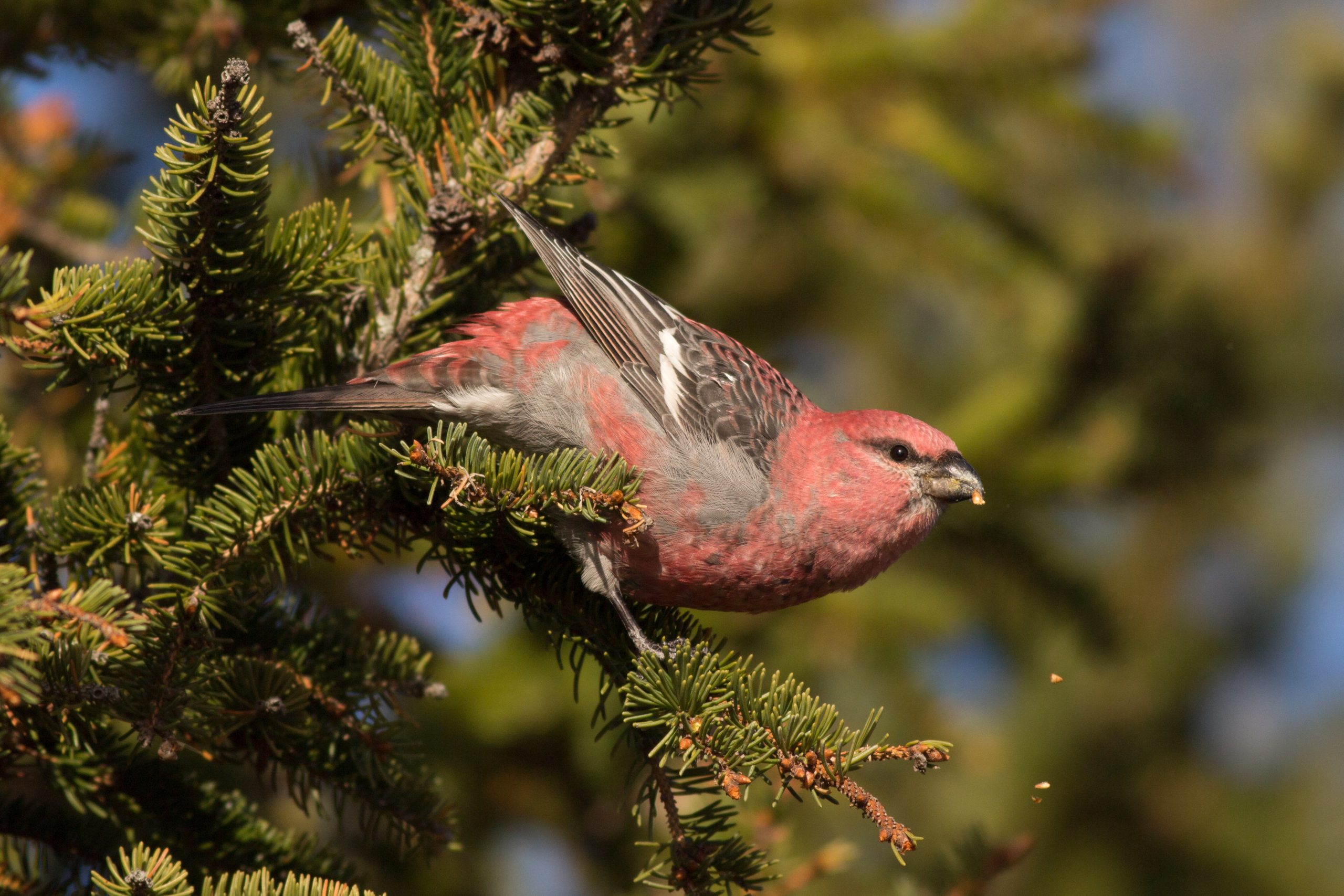By Tyler Hoar and Matthew A. Young:
With August reports of spotty berry crops across the eastern Boreal forest, we knew there would be at least a small movement southward of Pine Grosbeaks. What was not known was how bad the food crops were in northeastern Quebec and Labrador. At the Tadoussac bird observatory, morning flight surveys were reporting days of 100+ Pine Grosbeaks (and Boreal Chickadees) moving southwest in October, including one day topping 1000, which hinted at a food failure. Banders at the observatory reported approximately 70% of the banded grosbeaks were after hatch year birds.
The Pine Grosbeak flight moved southwest and then spilled southward across the narrowing Saint Lawrence river into New England. The extreme southern limits for any great Pine Grosbeak invasion is typically southern New York and northern Illinois, Indiana, Ohio, Pennsylvania and New Jersey. As fall progressed birds have invaded southward down the Hudson valley to south of Albany, New York in numbers, and it’s possible a few may even enter Pennsylvania and the lower Great Lakes before winter’s end. They have been slower to invade central New York and the lower Great Lakes, but one was reported from northern Indiana today, and a few have been reported south of Syracuse, New York, so time will tell whether any make it to Pennsylvania, New Jersey or Ohio. Brooklyn hasn’t seen one for decades, and we know a few birders that would love to see that happen. The last time any made it to Pennsylvania or New Jersey was the 2007-08 invasion.
Westward in the southern Boreal forest of Northern Ontario, hungry Black Bears and American Robins harvested much of the available mountain ash and winterberry crop leaving little for the Pine Grosbeaks to feed upon in their southward movements. Pine Grosbeaks have continued moving southward into Southern Ontario and the upper Great Lakes including the lower peninsula of Michigan looking for available food.
Grosbeaks will look for winterberry in wet areas, and rose hips and small ornamental crabapples or ripened apples planted throughout towns and countrysides. At feeders, this species like its cousins Evening Grosbeaks, prefer platform feeders stocked with sunflower seeds.
Being a year-round resident of the boreal forest across the Northern Hemisphere, Pine Grosbeaks have evolved to be a resilient survivalist and probably one of the toughest species of any of the finches. In addition to feeding on seeds found in fruiting berries, this species feeds on less nutritious, but widespread available coniferous tree buds of larches, spruces and firs. In many ways this species looks and acts like a colder weather parrot, and should therefore be watched for picking up grit or salt along roadsides this winter too. We hope many get to see this rarest of finches during this eastern superflight.
Photo Credits Tom Auer
FiRN is a nonprofit, and has been granted 501c3 status. FiRN is committed to researching and protecting these birds and other threatened finch species like the Evening Grosbeak and Rosy-finches, and if you have been enjoying all the blogs and identifying of Red Crossbill call types, redpoll subspecies and green morph Pine Siskins FiRN has helped with, please think about supporting our efforts and making a small donation at the donate link below.

